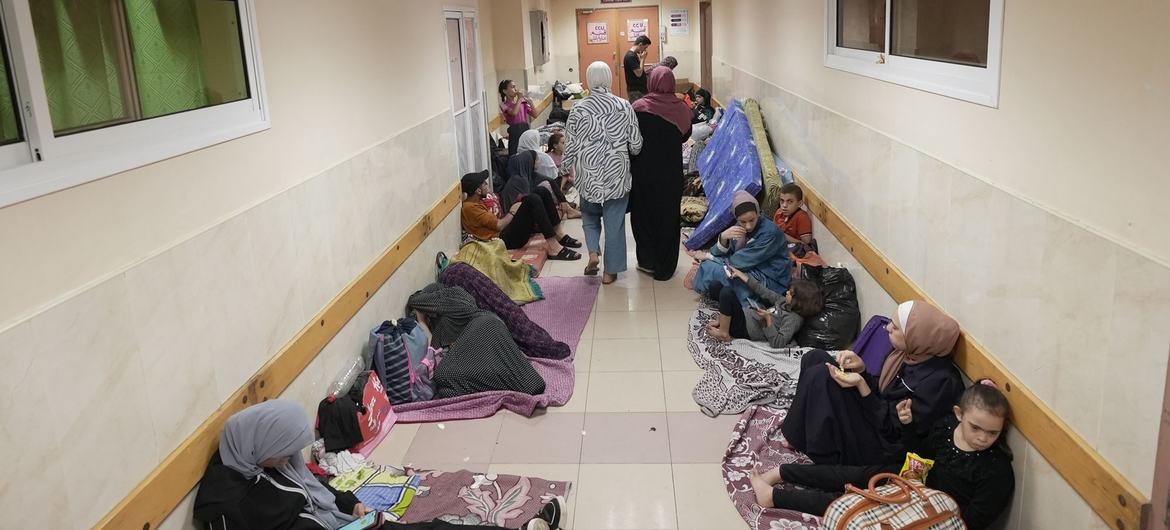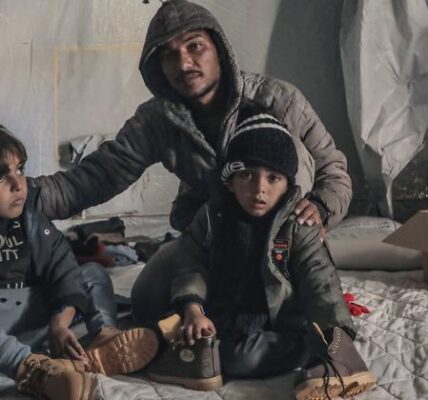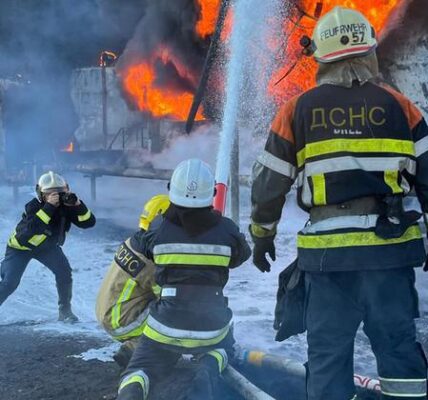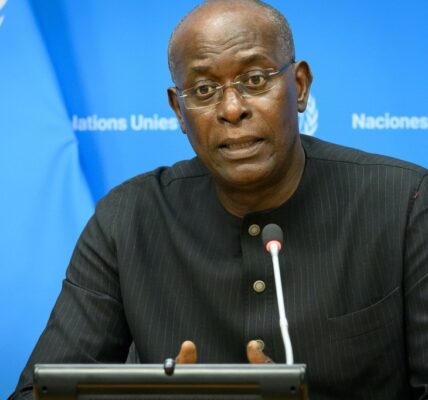The people of Gaza in the Israel-Palestine region are faced with difficult decisions and have been left with limited options.
The Israeli Defense Forces (IDF) have made repeated calls for civilians to evacuate Gaza City due to a reported military operation involving tanks. However, according to Lynn Hastings, the top UN humanitarian official in the area, these warnings have little impact as civilians have no safe place to go or are physically unable to leave.
‘Nowhere is safe’
She stated that when the routes for evacuation are targeted by bombing, both northerners and southerners are affected by conflicts, basic necessities for survival are scarce, and there is no guarantee of being able to return, people are faced with impossible decisions. She emphasized that nowhere in Gaza is considered a safe place.
Ms. Hastings pleaded for the safety of non-combatants during war and restated the demand for the prompt and absolute release of the over 220 individuals held prisoner by Hamas since their violent invasion into Israel on October 7th.
The violent incident resulted in the death of over 1,400 people, provoking strong and immediate disapproval from prominent leaders of the United Nations, including Secretary-General António Guterres.
Assistance for captive hostages in need of medical care.
There is limited information available regarding the well-being of the hostages. Following a meeting with relatives of some of the captives on Wednesday, the head of the World Health Organization (WHO), Tedros Adhanom Ghebreyesus, stated that it is crucial for those holding the hostages to show signs that they are alive, evidence of receiving proper medical care, and to release all those who were abducted immediately on humanitarian and health reasons.
He stated that the ICRC should be given immediate access to the hostages in order to assess their well-being, and the WHO is prepared to offer health assistance to the ICRC for the hostages.
“I pledged, on behalf of WHO, to make every effort to assist with the health and humanitarian requirements of individuals held in captivity,” Tedros emphasized.
Record death toll
On Wednesday, the Hamas-led Ministry of Health announced the highest number of deaths in Gaza so far, with a reported 756 fatalities, including 344 minors. This brings the total number of deaths in the region to 6,547 since Israel began their retaliation against Hamas’ October 7 attacks.
According to the de facto leaders of Gaza, ongoing bombardments have resulted in approximately 1,600 individuals, including 900 children, being reported as missing and potentially trapped beneath rubble.
Bodies in tents
The OCHA, a UN office responsible for coordinating humanitarian efforts, reported that during their visit to a hospital in Gaza, their personnel witnessed hundreds of injured men, women, and children.
The UN reported that a large number of individuals were in a state of unconsciousness, displaying visible injuries, and were located on beds, stretchers, and the ground. Medical care was limited. Additionally, multiple deceased individuals were being stored in a tent outside due to overflowing morgues.
According to OCHA, the current blockade on fuel and shortages of water, medical resources, and staff are causing hospitals to gradually stop functioning. Aid workers also cautioned that individuals were turning to consuming saltwater, which presents immediate health dangers.
According to the United Nations World Food Programme (WFP), as of Wednesday, there is enough essential food in Gaza to last for approximately 12 days.

The Al Shifa hospital is currently serving as a shelter for families who have been displaced in Gaza.
Convoy lifeline
During the regular noon briefing, the UN Spokesperson announced that the Office for the Coordination of Humanitarian Affairs (OCHA) reported 62 trucks traveling from Egypt into Gaza through the Rafah crossing over four days, starting from Saturday and ending on Tuesday. These trucks were carrying water, food, and medical supplies.
“According to Stéphane Dujarric, a significant portion of the aid has been delivered to hospitals, ambulances, and internally displaced persons (IDPs). Prior to the hostilities, an average of 500 trucks were permitted to enter Gaza on a daily basis.”
Approximately 1.4 million individuals in Gaza are currently displaced within their own region, with around 629,000 taking refuge in 150 emergency shelters designated by the United Nations Relief and Works Agency (UNRWA).
According to him, the water distribution in the southern Wadi Gaza region has shown some improvement temporarily as UNRWA and UNICEF were able to supply limited amounts of fuel from their current reserves to essential facilities.
“Unfortunately, the fuel currently present in these facilities will run out in the near future, and it is anticipated that the supply of piped water will once again come to a halt.”
Lebanon border: Firing continues
The spokesperson, Mr. Dujarric, stated that the UN peacekeeping Mission in South Lebanon (UNIFIL) is constantly communicating with officials from both sides of the Blue Line (the unofficial border between Israel and south Lebanon). Their goal is to encourage moderation and adherence to Security Council Resolution 1701.
Earlier today, the Mission detected gunfire between Lebanon and Israel near Blida and Aytaroun.
“They have collaborated with Lebanese authorities to put out fires near Alma ash-Shaab, caused by fighting along the Blue Line.”
The Security Council’s failure to take action
The Security Council was unsuccessful in reaching a unanimous agreement for a humanitarian ceasefire on Wednesday evening in New York.
Philippe Lazzarini, the leader of UNRWA, the agency responsible for Palestinian refugees, wrote an article on Thursday expressing concern over the ongoing Israeli bombing. He stated that in the future, people will question why the international community did not take bold action to end this devastating situation.
The head of the UN refugee agency (UNHCR), Filippo Grandi, expressed his admiration for the efforts of aid workers in Gaza, stating that their work is truly heroic. He also urged for the necessary resources to be provided to UNRWA, emphasizing that it not only serves as a crucial support for thousands of people, but also stands as a reminder of humanity amidst the destruction.
The source is the United Nations News Centre.



